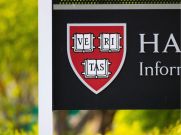Next to the housing industry, higher education may be the most credit-dependent segment of the American economy. College expenses are notoriously the second highest item after the home mortgage in the lifetime budget of many American families. And, with the exceptions of a few very wealthy institutions, colleges and universities are deeply dependent on the flow of borrowed money in the form of student loans.
If the current credit crisis continues, with radically diminished liquidity on the part of lenders, students will have a much harder time getting loans and many colleges and universities will be faced with insolvency.
An air of disbelieving, however, has settled over the academy. Hardly anyone is talking about the peril, let alone considering what might be done to stave it off.
Higher education has gone though a rough period that has run in tandem with the home mortgage crisis. September a year ago, Congress passed and President Bush signed a bill (the College Cost Reduction and Access Act) that attempted to reconfigure the incentives for lenders to participate in the federally-backed student loan programs. The reform, which decreased those incentives and shifted some funds to federal student grants, backfired. Some lenders pulled out of the federal student loan programs altogether and other lenders retrenched by redlining students who attend colleges where default rates were higher.
In October 2007, matters got much worse. First Marblehead Corporation, which was in the business of repackaging student loans issued by other lenders and selling them as bonds, came out with a new $1.1 billion student-loan-backed bond offering—and no one would buy it. Investors, wisened up by all the bad debt they had purchased in “securitized” home mortgage-backed bonds, were no longer interested in other securities that wrapped in unfathomable amounts of loans that would never be repaid. In December, Goldman Sachs “rescued” First Marblehead by investing $260.5 million in it and taking a 20 percent interest.
Through the late winter and spring, the student loan industry continued its downward spiral with more and more lenders dropping out or retrenching. Sallie Mae—the student loan counterpart of Fannie Mae and Freddie Mac—went into “a financial tailspin,” as the New York Times put it.
Faced with this crisis, Congress passed an emergency bail-out of the student loan industry in May. In outline, it is a lot like the plan that Treasury Secretary Henry M. Paulson, Jr. has put forward on a much larger scale to save America from the collapse of our financial institutions. Essentially it was a plan whereby the U.S. Government would buy up all the bad and doubtful student loan debt, giving the lender fresh capital to carry on. In this case, the Department of Education was the government entity that would give “cash for trash.”
Student loan default rates are, in fact, not all that high. Last week the Department of Education released data showing that the 2006 default rate was 5.2 percent. That figure requires a bit of explanation. It means, as Inside Higher Education put it, “the proportion of federal loan borrowers who began loan repayments between October 2005 and September 2006, and who defaulted on their loans by the end of September 2007.” So the 5.2 percent represents people who defaulted on their student loans almost immediately after they were supposed to begin repayment. In any case, the figure was up from 4.6 percent in 2005.
Defaults on student loans vary considerably depending on the kind of college the student attended. Students who attended four-year private colleges had the lowest default rate—2.3 percent; and students who attended 2 to 3-year proprietary colleges had the highest default rate—9.3 percent. Should colleges be blamed for high default rates? Some argue that, no, the blame should fall on the students. But in truth, many colleges are happy to receive the dollars borrowed by their students and spend little effort to ensure that the students are credit-worthy. Sound familiar? The home mortgage industry operated in much the same way.
Congress made some additional changes in the student loan industry when it passed the reauthorization of the Higher Education Act at the end of July—and that Bush signed in August. Lenders are now required to give borrowers a lot more information about the terms of loans; colleges are supposed to certify that a student needs the money before he can take a private student loan; and borrowers who declare bankruptcy can now ditch their private student loans.
These might indeed be helpful steps towards cleaning up the student loan industry, provided that the credit markets overall recover quickly. If not, the reforms won’t make much difference. Many colleges and universities pay a substantial portion of their operating expenses out of tuition dollars; nationwide, over 35 percent of college students pay at least some of that tuition with dollars that are borrowed. If the borrowing stops, so do the colleges.
It is said that some politicians are balking at the proposal to bail out Wall Street because they see a political advantage in having the crisis continue. If so, I hope they pause long enough to consider what this will mean for higher education.
Image: Pixabay, Public Domain













